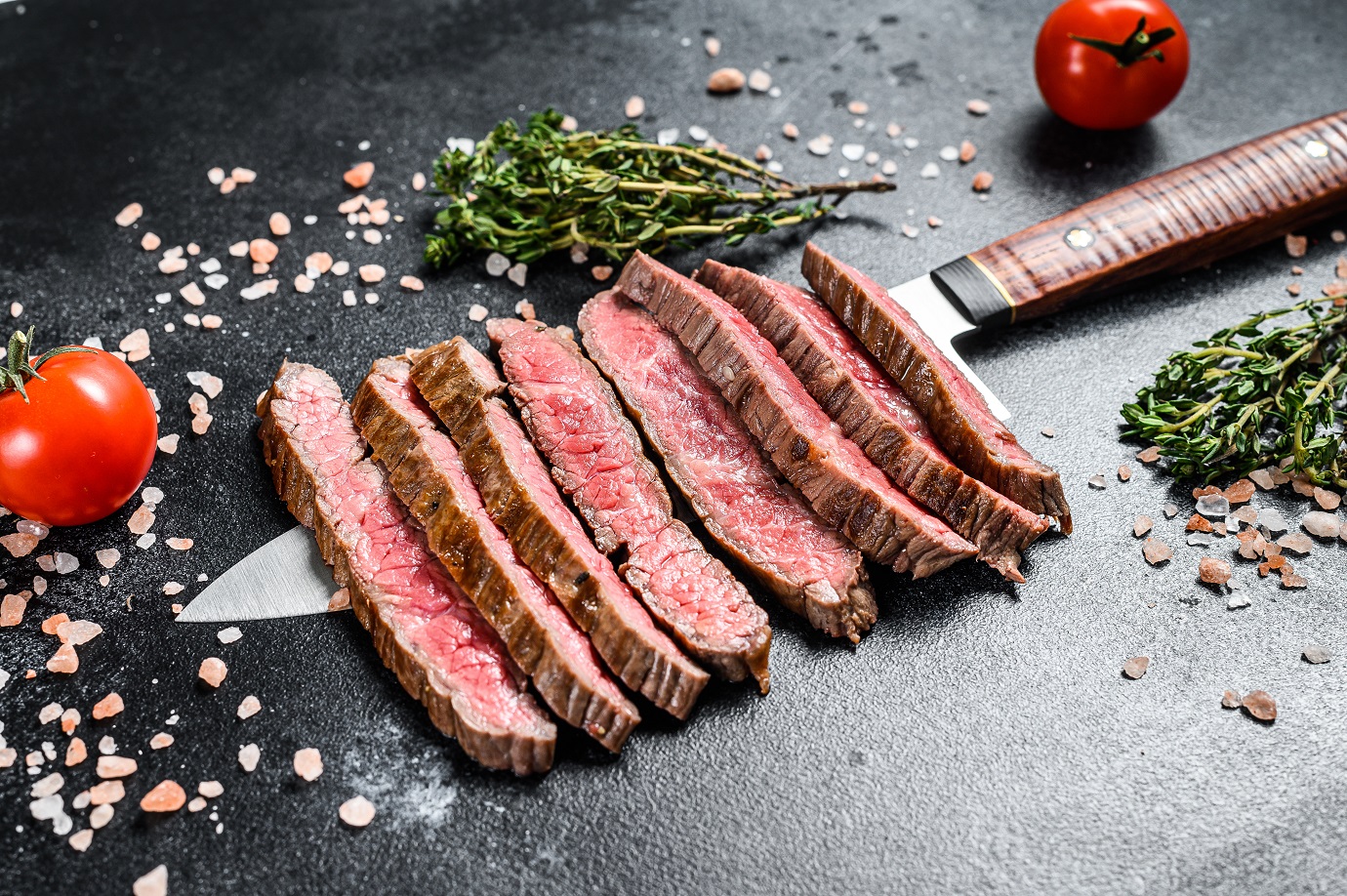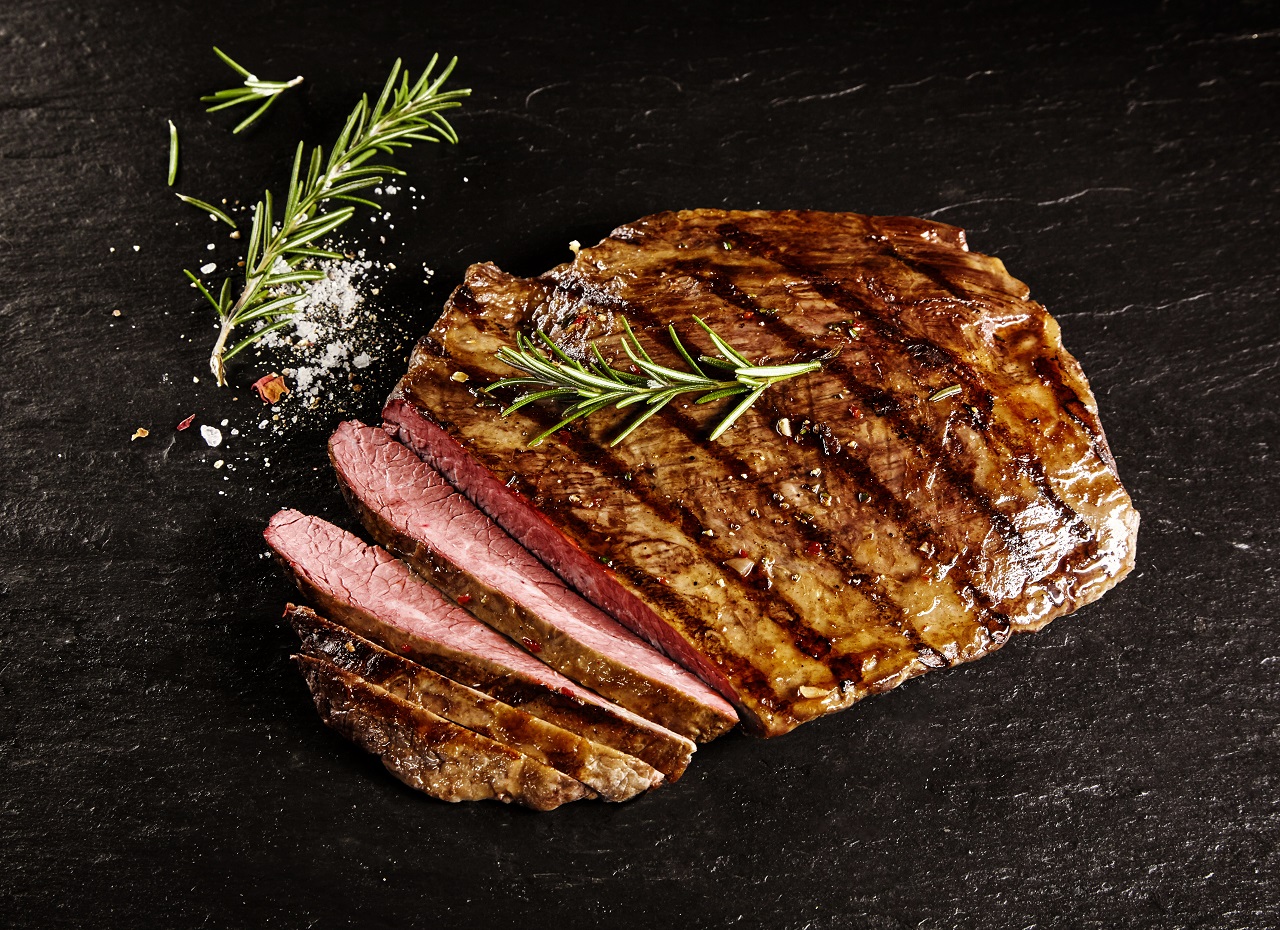If you regularly use your grill in the back yard, it’s easy to get caught in a rut.
Maybe you find yourself cooking the same roster of burgers, sirloin steaks, and veggie skewers.
There’s no need to be limited, though, even if you want to stick with steaks. Indeed, with so many different cuts at your fingertips, you’re spoiled for choice.
Do you know what you’re looking for when you’re buying steak, though, and do you know how to grill steaks optimally?
If not, don’t worry as we’ll be breaking down this and more in today’s guide to the best steaks for grilling.
The thing is, some steaks are much easier to prep and grill than others, and some should be avoided altogether when you’re grilling out. Knowing how to pick your way between these various cuts will stand you in good stead for years of happy grilling.
You should always look for steaks of choice grade as minimum. When you’re shopping for steak at a supermarket, you’ll be confronted with an array of choice and select grades. Choice meat has more fat than beef that’s graded select.
Marbling is the intramuscular fat running through beef. This is determined both by nutrition and genetics. The more marbling you see running through a cut of beef, the more tender the steak on your plate will be.
Ideally, you should use prime grade beef when you’re looking to grill the best steak. Head to a butchers where you’ll find a much wider cross-section of cuts, and you’ll also find steak that’s marbled to your requirements more easily.
We’ll launch right into the main event now with a snapshot of the top 10 grilling steaks, and then we’ll show you how to grill them to get the very best out of these cuts. As a parting shot, we’ll show you a handful of steaks to avoid when you’re next grilling out.
I. Top 10 Steaks for Grilling
- Ribeye steak
- T-bone steak
- Filet mignon
- Striploin
- Top sirloin
- Porterhouse
- Flat iron steak
- Flank steak
- Hanger steak
- Skirt steak
1) Ribeye steak

The ribeye is widely considered the best steak overall. This cut is used in competitions by the Steak Cookoff Association.
A great ribeye is heavily marbled and extremely juicy and tender.
You can buy ribeyes either bone-off or bone-in. While you should look for ribeye with plenty of streaky marbling, you should steer clear of cuts with a big mound of fat in the center.
Ask your butcher to slice your steak from 0.5 inches to 2 inches thick, depending on personal taste.
Sear your ribeye at a very high temperature and then finish it on the cool side of the grill. Alternatively, reverse the process and finish your steak with a sear.
2) T-bone steak

Meat lovers the world over sing the praises of the T-bone steak.
The steak is substantial as it’s actually two separate steaks rolled into one, so avoid this cut unless you have a healthy appetite.
To the left of the bone is the striploin steak, while to the other side is a portion of the tenderloin. Since one of these steaks will often finish cooking before the other, grilling T-bone steak can be tricky until you master the art. Don’t let that put you off, though!
These steaks work best when sliced at least 2 inches thick and prepared using the reverse sear method.
3) Filet mignon

The filet mignon is one of the most tender cuts of beef you’ll find.
With each steer yielding no more than a pound of filet mignon, these steaks are expensive.
The prime benefit of this steak is the tenderness, and it’s actually not that flavorful. To combat this, filet mignon is often wrapped in bacon. Try this and you won’t begrudge spending the extra dollars.
4) Striploin

A striploin steak goes by many names including:
- Kansas City steak
- New York strip
- Shell steak
- Club steak
The striploin steal is also very tender and packed with marbling. The steak has a pronounced beefy flavor and is a classic cut sold in steakhouses all over the world.
Ask for this steak to be sliced from 0.5 inches to 2 inches thick. Start the steak by searing it and then finish it off on the cooler side of the grill. Alternatively, use the reverse sear method.
5) Top sirloin

The top sirloin is sliced from the sirloin primal. A great budget cut, you’ll sacrifice tenderness, but not at the expense of flavor.
You should grill this steak quickly, making sure to frequently check the internal temperature. Don’t cook top sirloin steak beyond medium-rare or it will dry the steak excessively.
6) Porterhouse

A porterhouse is commonly mistaken for a T-bone steak, but the porterhouse actually comes from further up on the steer, yielding a bigger chunk of tenderloin.
This steak should be thickly sliced and cooked with a reverse sear.
7) Flat iron steak

A flat iron steak is boneless and sourced from the steer’s shoulder. Only a filet mignon is more tender, and flat iron steak is very well-marbled.
Season this steak with salt and pepper than quickly grill until medium rare.
8) Flank steak

Flank steaks come from the belly area of the steer, also known as the flank.
This steak might be tough, but it’s also loaded with flavor.
Slice the steak thinly and grill it rapidly over a high heat until no more than medium-rare. Slicing this steak against the grain will maximize tenderness.
9) Hanger steak

A hanger steak or butcher steak is cut from between the loin and the rib.
Since this steak is not too thick, you should grill it quickly over direct heat. This is another steak that comes out even more tender if you slice it against the grain.
10) Skirt steak

Skirt steak is commonly used to make fajitas.
A thin cut, it responds best to being cooked with a hot, fast sear and direct heat.
This steak has a tangy beefy flavor. Using some kind of marinade or spice rub works well to counter this. Slice the skirt steak against the grain and it will melt in your mouth.
II. What’s The Best Way to Grill Steak?
OK, assuming you’ve now chosen the cut of steak that most takes your fancy, how do you go about grilling it?
Well, you have two main options at your fingertips:
- Grill the steak using the reverse sear method
- Cook your steak super-hot and fast
You can use either a charcoal grill or a gas grill regardless of which grilling method you choose. You could even try your hand using an indoor smokeless grill.
Grill the steak using the reverse sear method
If your steak is at least 1.5 inches thick, the reverse sear method typically delivers the best results.
Set your grill up with dual cooking zones.
Start by slowly cooking your steak on the indirect side until it’s almost done.
Next, ratchet up the grill temperature and finish the steak by quickly searing it.
Cook your steak super-hot and fast
With this grilling method, you quickly sear your steak over direct heat to kick off. This will only take a minute or so per side, according to how thickly your steak is sliced.
For more doneness, you should finish your steak on the indirect side of the grill.
III. Are There Any Steaks That Don’t Work Well on the Grill?
With so many different options at your disposal when you’re grilling steak, there’s no need to compromise with sub-par cuts.
Avoid all of the following cuts when you’re shopping for steak to grill:
- Chuck roast
- Rump roast
- Brisket
- Short ribs
All of the above cuts are remarkably tough, and they don’t respond well to grilling. Instead, consider cooking them low and slow or pop them in a smoker. Smoked brisket is unbeatable and much better than trying to grill this tough steak. Short ribs also work wonderfully in a BBQ smoker.
IV. Conclusion
If you arrived here today at Hempen Hill BBQ stuck in a grilling cut and unsure how to vary the steak you throw on the grill, you should now be much better placed to navigate the various cuts of steak at your disposal.
It’s always well worth befriending your local butcher. You can find superior cuts and your butcher can also give you plenty of handy hints on grilling and more.
Don’t be tempted to cheap out when it comes to buying steak. The quality of the meat will directly impact the results on your plate, so you’ll only be shortchanging yourself.
Take a moment to bookmark our blog before you head off and be sure to pop back soon.